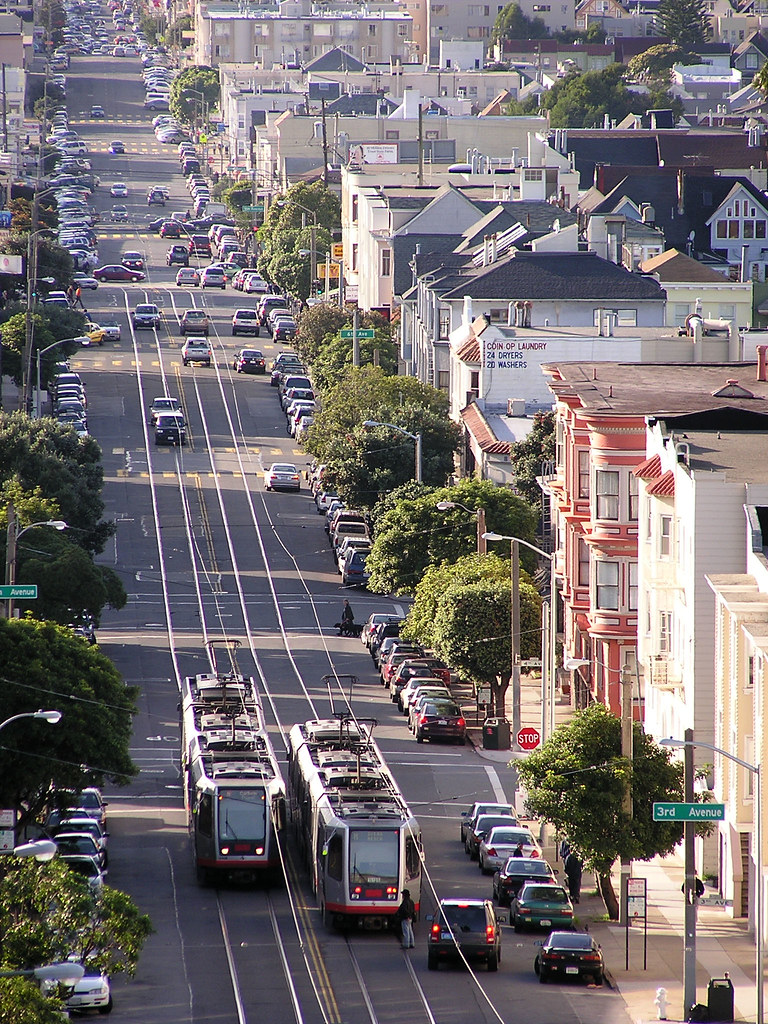Half of San Francisco's traffic signals were supposed to have transit priority installed by this spring, according to the ambitious schedule set out by managers of the Muni Transit Effectiveness Project two years ago. This may not come as much of a surprise, but the SFMTA isn't quite meeting its target.

Of the 600 signals to be upgraded, the SFMTA expects to have 170 completed in the spring, according to agency spokesperson Paul Rose. Installation of those signals, which are all along the 14-Mission and 8X-Bayshore routes, began last fall, with the N-Judah next in line. The on-board equipment needed for the signals to detect the buses and trains, then turn or stay green, has been installed on the 316 vehicles stored at the Flynn and Potrero Muni yards, said Rose.
There are a couple bits of good news for Muni riders. Transit-only lane enforcement cameras are on track to be installed on every Muni bus by this spring as planned, Rose said. Transit priority signals and bus-mounted cameras "will help to give riders a more reliable ride," said Jim Frank of the SF Transit Riders Union, which "strongly supports installation of TOLE cameras on all buses and TSP on all signals in the city."
"Double-parked vehicles and waiting at red lights slows down the bus considerably," said Frank. "We commend the MTA on being on track with the bus cameras and encourage them to get the TSP program completed as soon as possible."
The next transit priority signals are set to be installed along the N-Judah, Muni's busiest line, over the coming year. The signals are part of a package of proposed TEP upgrades for the N, which the SFMTA will explain at a community meeting Thursday in the Inner Sunset. In conjunction with those improvements, the SFMTA also plans to replace rails and other infrastructure in the Sunset Tunnel during 15 weekend closures, which will be the focus of another meeting on Wednesday in the Lower Haight.
The overhauls proposed for the N should bring a quicker, more reliable commute. Plans include transit bulb-outs on Irving Street (which will also make the street more pedestrian-friendly) and stop consolidations. Stops will also be moved to the far side of the transit priority signals (so trains can board after clearing the intersection), and new signals will replace some stop signs along Irving and Judah Street. Altogether, the SFMTA expects the improvements to save to 1.5 minutes in each direction, or 25 percent of the trip time, in the stretch between Arguello Street and 19th Avenue.
The physical street changes on Irving are set to come with a re-paving planned in spring of next year. The bulb-outs would replace up to 30 parking spots, which is expected to be the biggest point of contention from merchants.
But as Inner Sunset resident Greg Dewar noted on his blog, the N-Judah Chronicles, "Many changes have been made in other neighborhoods with success, and no armageddon for local residents and businesses." On Carl Street in Cole Valley, plans for transit bulbs at Cole and Stanyan Streets were watered down to preserve a handful of car parking spaces, despite the pleasant boarding experience they bring for tens of thousands of daily riders.
As an Inner Sunset resident myself, I'll be cheering the N upgrades, while voicing one big concern -- the transit bulbs, as planned, would force bicycle riders on Irving to ride on or next to the Muni tracks, a dangerous and harrowing situation. (Irving is arguably the most heavily-used and practical route for bicycling in the neighborhood.) There appears to be ample room to include a bikeway between the sidewalk and boarding island, akin to the one installed at Duboce at Church Streets and planned on Masonic Avenue and Second Street. Hopefully, we'll continue to see that type of best practice design incorporated as the badly-needed TEP bulb-outs come to fruition on Muni routes around the city.




